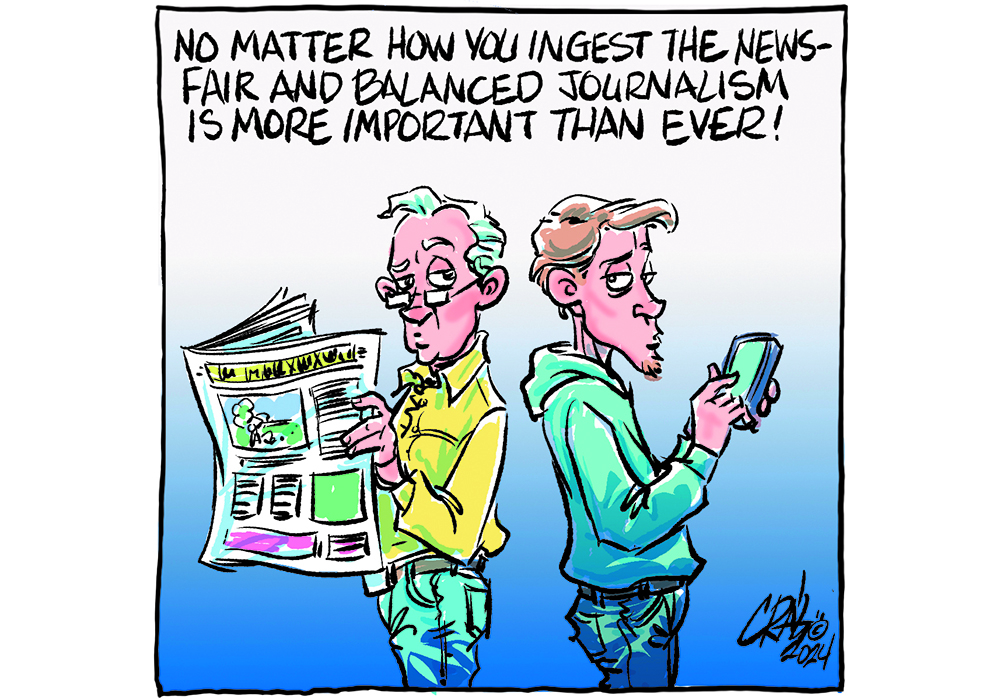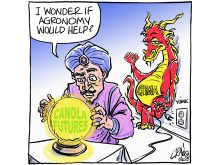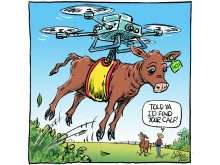Some months ago, during a personal conversation with a farmer, he held up his smartphone in exasperation, saying, “how do you know what to believe?”
The flippant answer would have been to tell him to download our AGCanada app to access the Western Producer and our sister publications.
But “trust us” is a pretty inadequate answer. It immediately begs the question, “why?”
Read Also

Growth plates are instrumental in shaping a horse’s life
Young horse training plans and workloads must match their skeletal development. Failing to plan around growth plates can create lifelong physical problems.
It’s a question that prompted discussion around our editorial board table during National Newspaper Week earlier this month. As a paper that serves farmers, it was particularly timely, because October has traditionally been agriculture month in Saskatchewan.
Today’s media landscape is ever-more chaotic, launched into overdrive by social media that allows anyone, anywhere, to publish, well, anything.
Authors of online information don’t even need to be human. A 2024 report by cybersecurity company Imperva estimates that slightly less than half of all internet traffic is created by bots, which are automated programs that generate content and respond to comments.
As machine learning, commonly known as AI, becomes more sophisticated, it is faster and easier to create articles and even multimedia content. Like any new tool, it can be used for good or ill.
On the positive side, AI can take a technical document and, with a few keystrokes of command, translate it into a form that makes sense to an average reader.
Agriculture journalists can use these tools to quickly get the gist of the latest research papers, without having to plow through thickets of technical language and look up unfamiliar terms. This allows them to ask the experts better questions and get knowledge to farmers more quickly.
A critical point: journalists also check with these experts to ensure the AI translation is accurate.
On the negative side, these technologies and social media channels are used to create and spread misinformation — by individuals, politicians and even state actors. Some examples from agriculture include the demonization of crop protection products, certain plant breeding technologies and yes, cow burps.
This year, getting accurate information is even more challenging. The United Nations calls 2024 the biggest election year in history, with 3.7 billion voters in 72 countries casting ballots. In Canada, municipal and provincial governments are seeking new mandates and our federal government will soon do the same.
It’s not surprising to see the usual fiery rhetoric among competing politicians; what appears to have changed in the western world is how extreme, inflammatory and polarized this rhetoric has become.
Politicians used to listen respectfully to a journalist’s questions and give a response, though not necessarily an actual answer. Today, too often politicians respond to questions with ridicule or scorn. It’s an attempt to discredit the media and put themselves forward as the only honest brokers.
History shows this is a dangerous path. The official newspaper of the Soviet Union was called Pravda — Russian for truth. Today there is a social media channel that follows the same naming convention. In 2022, the leader of Hungary’s autocratic government advised U.S. conservatives that their path to success required having their own media outlets. Information is power.
So, how do you know what to believe?
Start with the flesh-and-blood journalists who put their names at the top of their work in the paper you hold, either on traditional ink-on-paper or delivered to your electronic device. We stand behind our work and are accountable to you, our readers. It has been our commitment for more than 100 years. It is our promise today.
Karen Briere, Bruce Dyck, Barb Glen, Michael Robin, Robin Booker and Laura Rance collaborate in the writing of Western Producer editorials.















